
Why Your Dog Needs Dog Wheels


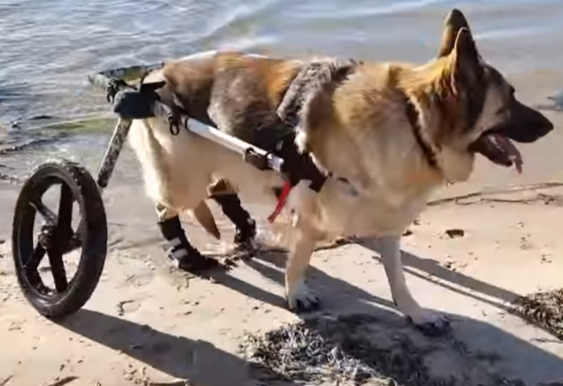
Dog wheelchair wheels are designed to provide mobility assistance to dogs with limited or impaired movement due to arthritis, hip dysplasia, spinal cord injury, neurological disorders, and other conditions.
Dog wheelchair wheels come in various shapes, sizes, and styles to accommodate different breeds and sizes of dogs. They are typically made from durable materials such as aluminum, steel, and plastic, and feature adjustable straps and handles for easy maneuvering. Depending on the type of wheelchair, wheels can also be inflated with air or filled with heavy-duty foam for added comfort.
Dog wheelchair wheels can be used to help a dog with limited mobility move around more easily and safely. These wheels can also be used to help a dog who is recovering from surgery or an injury to get around without putting too much strain on its body. Depending on the type of wheelchair, a dog may also be able to use the wheels to climb stairs and move around on different surfaces.
In addition to providing mobility assistance, dog wheelchair wheels can also provide psychological benefits for a dog. Dogs that are unable to move around as freely as they used to can become depressed and discouraged, but having access to a wheelchair can help keep them active and engaged. The wheelchair can also help a dog stay independent and maintain their dignity, which can help keep its spirits high.
Dog wheelchair wheels can be a great way to provide mobility assistance and psychological benefits to a dog. They are typically designed to be durable and adjustable, so they can be used safely and comfortably by a wide range of dogs.
Click Here to Get Your Free Mobility Guide Now!
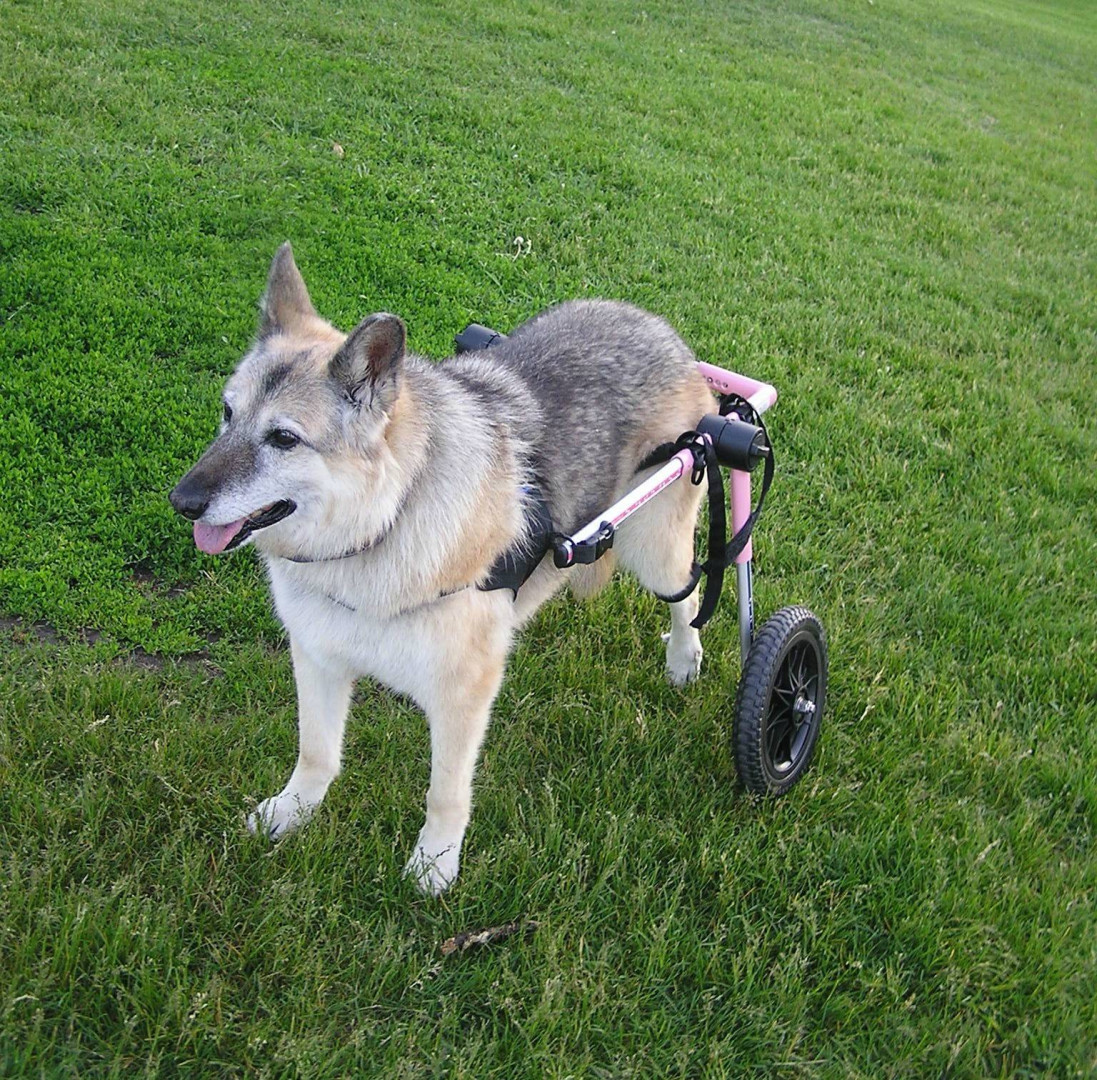
K9 carts are an increasingly popular tool for helping disabled and injured pets get around. As more pet owners become aware of the benefits of K9 carts, they are quickly becoming the preferred choice for disabled dogs. K9 carts can be a great help to dogs that have suffered a stroke, spinal cord injury, or other mobility issues.
The main benefit of K9 carts is that they provide support and stability to a disabled dog. By providing extra stability, the cart can help a dog move around with less risk of tipping over or falling down. This is especially important for dogs that are at risk of developing pressure sores from lying down in an uncomfortable position for too long.
Another benefit of K9 carts is that they offer a safe and comfortable way for injured dogs to get around. Many carts feature a cushioned seat with comfortable straps, which allow the dog to sit or lie down comfortably. This is especially beneficial for dogs that are recovering from surgery or that have arthritis or other chronic conditions.
In addition to providing support and stability, K9 carts are also important for socialization. Dogs that are confined to a wheelchair or cart can easily interact with other dogs and people, which can be an important part of their mental and physical health.
K9 carts are also a great way to exercise a disabled dog. By allowing the dog to move around, the cart can help the dog maintain their muscle strength and cardiovascular health. This can be beneficial for dogs that are recovering from surgery, which can often lead to a decrease in muscle mass.
Finally, K9 carts can provide a sense of freedom for disabled dogs. By allowing the dog to move around in the house or backyard, the cart can help the dog feel more independent and provide a much-needed distraction from the pain and immobility they may be experiencing.
Overall, K9 carts are a great way to help disabled and injured pets get around more easily and safely. By providing support and stability, allowing for socialization, and providing a sense of freedom, K9 carts can be an invaluable tool for pet owners with disabled dogs.
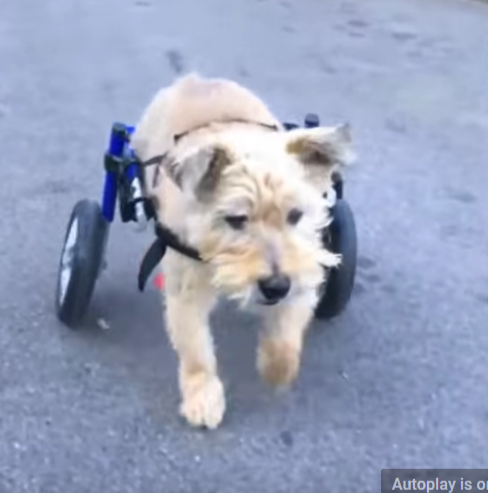
When it comes to dog hind leg problems, the cause and solutions can vary significantly. Depending on the severity of the injury and the age of the animal, the best course of treatment may be different for each case. Some of the most common causes of dog hind leg problems include joint and muscle injuries, arthritis, and neurological disorders.
Joint and muscle injuries are the most common cause of hind leg problems in dogs. If a dog has experienced trauma to its hind legs, such as a fall, a jump, or a collision, it can cause inflammation, pain, and stiffness in the joints and muscles. This can lead to difficulty walking and even complete loss of use of the legs. Treatment for joint and muscle injuries typically involves rest and anti-inflammatory medication. Depending on the severity of the injury, physical therapy may be prescribed to help the dog regain strength and mobility.
Arthritis is another common cause of hind leg problems in dogs. Arthritis is a degenerative joint condition that can cause pain, stiffness, and swelling in the joints, leading to difficulty walking and impaired mobility. Treatment for arthritis includes rest, anti-inflammatory medication, and in some cases, glucosamine supplements to help with the pain and inflammation.
Neurological disorders are also a potential cause of hind leg problems in dogs. Disorders such as degenerative myelopathy and intervertebral disc disease can cause pain and muscle weakness. Treatment for neurological disorders typically includes physical therapy and medication to reduce inflammation and help with pain management.
No matter the cause of hind leg problems in dogs, it is important to seek veterinary advice and treatment as soon as possible. Early diagnosis and treatment can help reduce pain and discomfort and improve the animal’s quality of life.
Click Here to Get Your Free Mobility Guide Now!
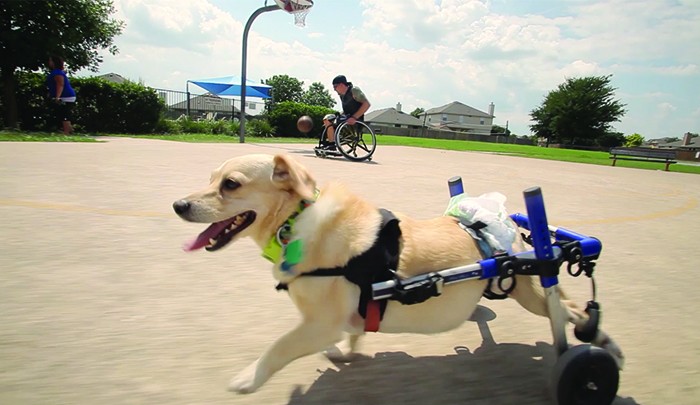
The anatomy of a dog’s hind leg is quite complex, yet incredibly fascinating. The hind leg of a dog consists of several key components, including the femur, tibia, fibula, patella, tarsal bones, metatarsals, and phalanges. The femur, or thigh bone, is the longest bone in the hind leg, and it is the primary weight-bearing bone. It connects the hip joint to the knee joint, and the lower end is capped by the patella, which is commonly referred to as the knee cap.
The tibia and fibula are the two bones of the lower leg. The tibia is the larger of the two and is the primary weight-bearing bone. It connects the knee joint to the ankle joint, and the lower end is capped by the tarsal bones. The fibula, or smaller bone of the lower leg, is located on the outside of the leg and is not weight-bearing. It serves to help support the knee joint.
The tarsal bones are the seven bones that make up the ankle joint and heel. They are the talus, calcaneus, cuboid, lateral cuneiform, intermediate cuneiform, medial cuneiform, and navicular. These bones are responsible for the flexibility of the ankle joint, allowing the dog to move in multiple directions.
The metatarsals are the five bones in the foot that run from the ankle joint to the toes. These bones are responsible for the stability and flexibility of the foot and are the primary bones used to support the body when the dog is standing or walking.
Finally, the phalanges are the bones of the toes. Each toe has three phalanges, and the dewclaw (or thumb) has two. The phalanges are responsible for the flexibility of the toes and provide the dog with additional grip and stability when walking.
Overall, the dog’s hind leg is incredibly complex, yet incredibly functional. Its anatomy allows for a range of motion and flexibility that enables the dog to walk, run, and jump, making it an essential part of the dog’s anatomy.
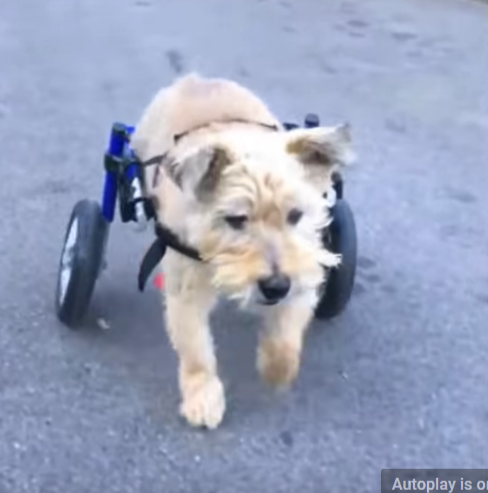
Handicapped pets can be some of the most incredible animals in the world. Despite the physical challenges they face, they still manage to bring joy and comfort to their owners. Having a handicapped pet can be a rewarding experience that can help to broaden your perspective and bring a unique level of companionship to your home.
Caring for a handicapped pet can be a challenge, but the rewards far outweigh the difficulties. Here are a few tips for helping to make your pet’s life as comfortable and enjoyable as possible.
First, be sure to provide your pet with the necessary medical care. Many handicapped pets require special treatments and medications to help them manage their condition. Talk to your vet to make sure that your pet is receiving the care they need.
Second, take the time to make your home accessible to your pet. Depending on your pet’s needs, you may need to provide ramps, special bedding, or other items to make it easier for them to move around.
Third, pay attention to your pet’s behavior and adjust as needed. Some handicapped pets may require special diets, extra exercise, or other adjustments to ensure that they are healthy and happy.
Finally, show your pet lots of love and attention. Though they may have a physical disability, handicapped pets still have the same emotional needs as other animals. Make sure that you provide them with the love and care that they need.
Caring for a handicapped pet can be a challenge, but it can also be incredibly rewarding. If you are considering adding a handicapped pet to your family, be sure to do your research and find out all that you need to know to ensure that your pet is happy and healthy.